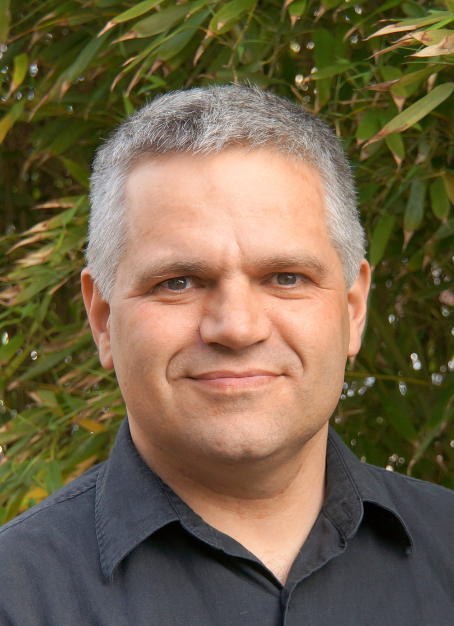| 1969 | Born in Trier |
| 1990-1997 | Studied physics at the University of Kaiserslautern |
| 1993 | GSI student programme, Gesellschaft für Schwerionenforschung, Darmstadt, Germany |
| 1996 | Diploma with Prof. H. Oechsner, Institute for Surface and Thin Film Analysis, University Kaiserslautern, Spectroellipsometric investigations of amorphous germanium and silicon semiconductor structures |
| 1997-2002 | Ph.D. with Prof. T. Palberg, University Mainz, Optical Microscopy of Colloidal Suspensions under Non-equilibrium Conditions |
| 2003 | Award for outstanding thesis, University of Mainz |
| 2002-2008 | Postdoc with Prof. D. Richter, Institute for Neutron Scattering, Forschungszentrum Jülich, Germany |
| 2008 - | Staff scientist at the Jülich Centre for Neutron Science |
| 2014-2016 | Member of the Subcommittee 8 “Biology”, ILL, Grenoble |
| 2016 - 2019 | Chairman of the Subcommittee 8 “Biology”, ILL, Grenoble |
2021- | JPARC MLF Reviewer |

Dr. Ralf Biehl
Senior Scientist at JCNS-1: Neutron Scattering and Soft Matter
Forschungsthemen
Adresse
Forschungszentrum Jülich GmbH
Wilhelm-Johnen-Straße
52428 Jülich
Jülich Centre for Neutron Science (JCNS)
Neutronenstreuung und weiche Materie (JCNS-1)
Gebäude 04.8 / Raum 380
Research Interests
Proteins are the molecular machines of life. As nanomachines of metabolism, they are tirelessly active in every cell of our body, transporting, synthesizing, dividing and transforming substances.
Neutron Spin Echo Spectroscopy (NSE) is a versatile tool to study functional collective dynamics as large-scale motions on the time scale of 1 to 500 nanoseconds on different length scales with the ability to determine the relaxation time and amplitude of the motions.
In combination with other inelastic NS techniques, SANS/SAXS and NMR structure and function of proteins can be elucidated on the natural size and time scale of these macromolecules.
My general interest is to identify functional domain motions and characterize their timescales and amplitudes by combining neutron scattering methods such as NSE with other complementary biophysical methods.
In recent studies we found large-scale collective motions of domains in yeast alcohol dehydrogenase and phosphoglycerate kinase, determined the activation energy of internal friction in unfolded ribonuclease A, and identified the force constant and relevant friction contribution in immunoglobulin IgG. The current focus is on the LINXS antibody in solution research program. Other topics include the dynamics of intrinsically disordered proteins (IDPs), where the source of internal friction that determines the reconfiguration times of IDPs is being investigated.
Other polymeric materials with structural features like proteins (charge, hydrophobicity) are of interest. We investigate e.g. polyelectrolytes (PE) or alternating amphiphilic polymers (AAP). While PE can be considered as IDP prototypes, AAP form different structures or translocate through biological membranes.
Related to the scientific focus on scattering methods, I am developing the Python software Jscatter with the aim to provide useful models for neutron and X-ray scattering form factors, structure factors and dynamic models (quasi-elastic neutron scattering) and other related topics. A goal is to make difficult methods and models more accessible to non-experts, with the possibility to document the analysis of data using scripts, also in Jupyter.
